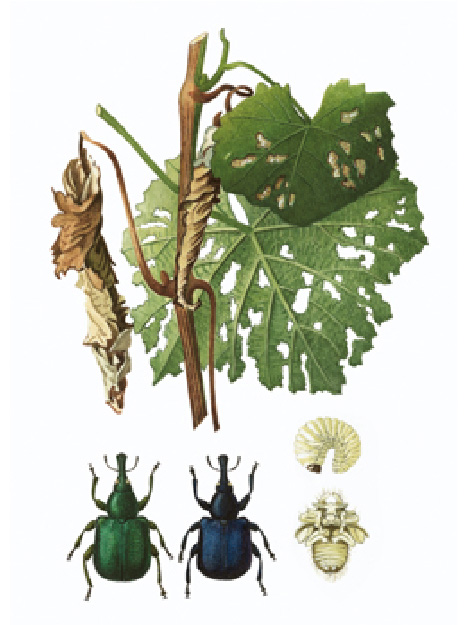Byctiscus betulae
Byctiscus betulae
Appearance
The adult vine weevils are 5 - 7 mm in size, metallic golden green, steel blue or copper red in color.
The larvae grow up to 8 mm, are whitish with brown head capsule and have no leg pairs.

Biology
The females lay cigar-shaped leaf wraps of one or more leaves from about the beginning of May. The petioles are gnawed on and the wilting leaves are twisted together and stuck together with a secretion. A female produces a total of 20 - 30 such wraps, in each of which four to six eggs are laid. Eight to ten days after the eggs are laid, the larvae hatch and fall to the ground with the withering wrappers. There, the three larval stages feed on the decaying leaf tissue of the wrapper and pupate in the soil beginning in August. Some of the beetles appear in the fall (about September) or not until the next spring, starting in April.
Prevention and control
- Natural counterparts of the vine piercer, such as various parasitoids, predatory insects or insectivorous vertebrates can contribute to the reduction of the beetle population (conservation of beneficial insects!).
- Since the grapevine leafhopper ("cigar moth") is relatively dispersive, collecting the leafhoppers with the beetle larvae before withering can help reduce new infestations in the following season.
- Control measures with plant protection products can be carried out in case of heavy infestation at the latest when the first leaf wraps become visible (see list of plant protection products approved in Austria).
Last updated: 04.09.2023
automatically translated